Phenology Blog: A Guide to Centennial Woods Through the Seasons
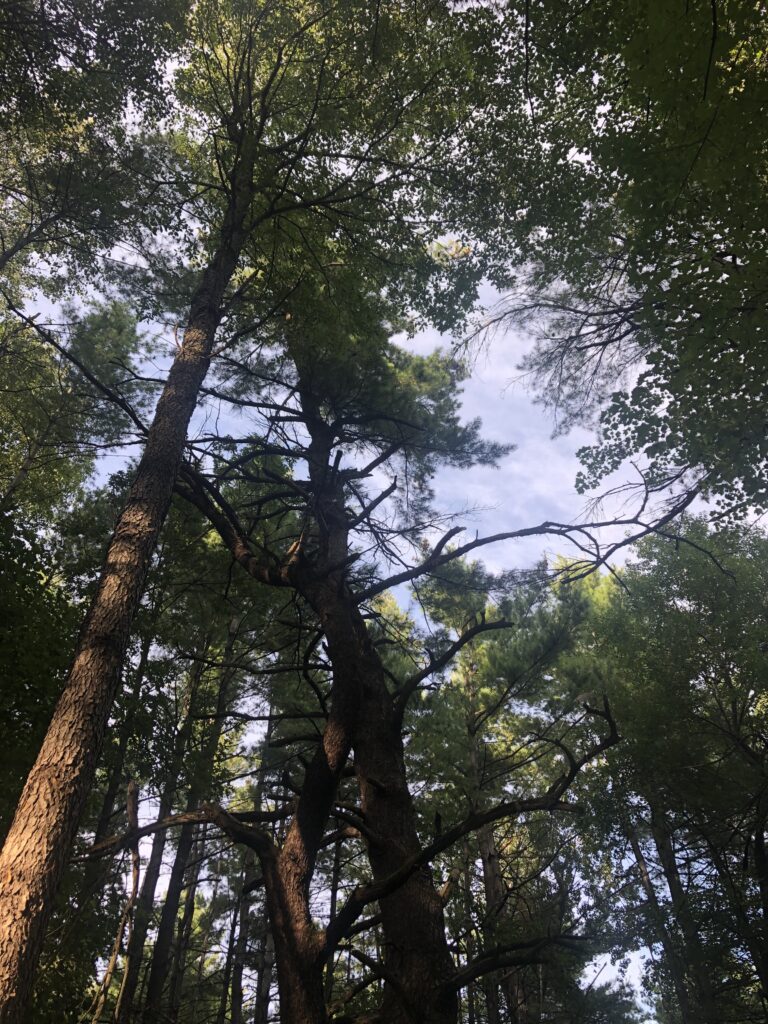
Why Centennial Woods?
Centennial Woods, a staple natural area of UVM, is an accessible and popular woodland that houses a wide range of species. Therefore, I chose to observe a spot in Centennial Woods throughout the year, because of its significance to UVM and my interest in how the changing seasons will affect the many different species present in the woods.
Where is Centennial Woods?
Located directly off of Catamount Drive, Centennial Woods is only an 11 minute walk away from the central campus of UVM. From the central campus dorm, I can simply walk past the water tower and down to Carrigan Drive which takes me directly to Catamount Drive, where the Centennial Woods trailhead is located.


Inside Centennial Woods
The place I chose to observe in Centennial Woods is very close to the trailhead. This spot drew me because it was very open and accessible, due to the pine needle coverage on the ground, and because it had a number of different tree species in the understory and overstory.
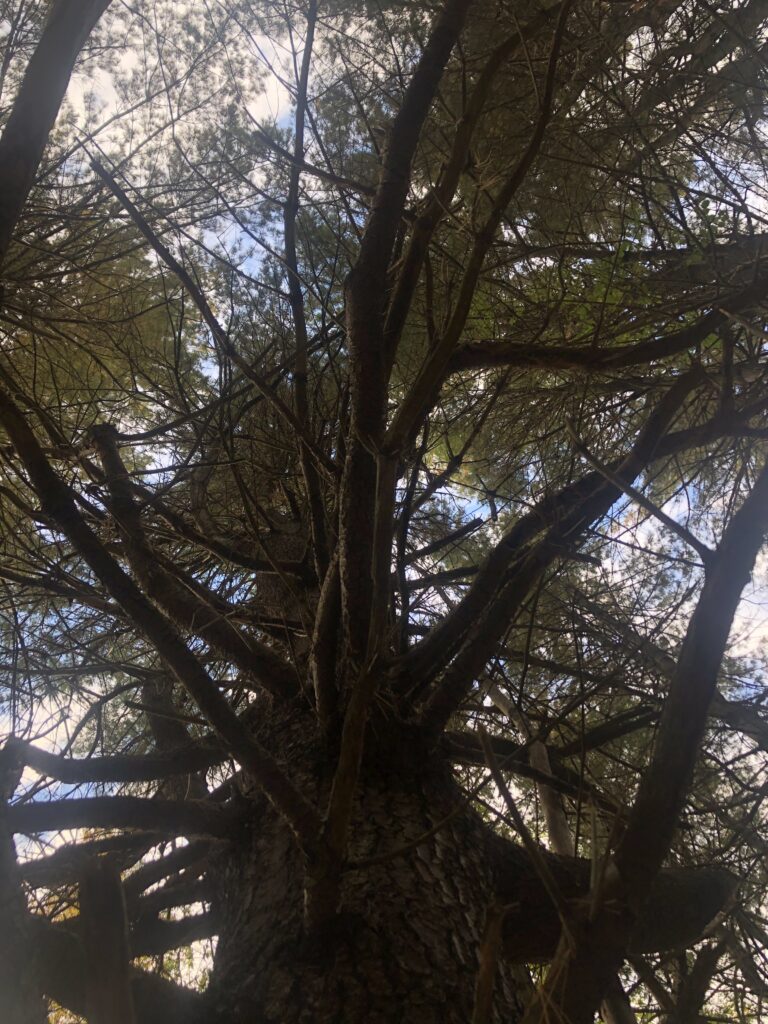
Species Observations
Woody Plants Present:
Overstory:
- Eastern White Pine
- Boxelder
- Sugar Maple
Understory:
- Sugar maple sapling
- Boxelder sapling
Non-Woody Plants Present:
Overstory:
- None
Understory:
- Poison Ivy
- Fern species – Hay scented or Sensitive
What’s Happening in October?
~Visit 1~
Overstory
In the overstory, there were primarily Eastern white pines. Many of which were fairly old, as their needles weren’t present until very high up on the trees. From the needles that were visible, some browning could be seen at the ends of the branches, which is typical of this species during the changing seasons. Some boxelders were also present, mainly growing out of a fallen dead tree. The leaves of the Boxelders were getting brown spots and turning a little bit yellow. Lastly, there was a large sugar maple that was distinctly changing colors from green to yellow/orange to red, due to the changing seasons.
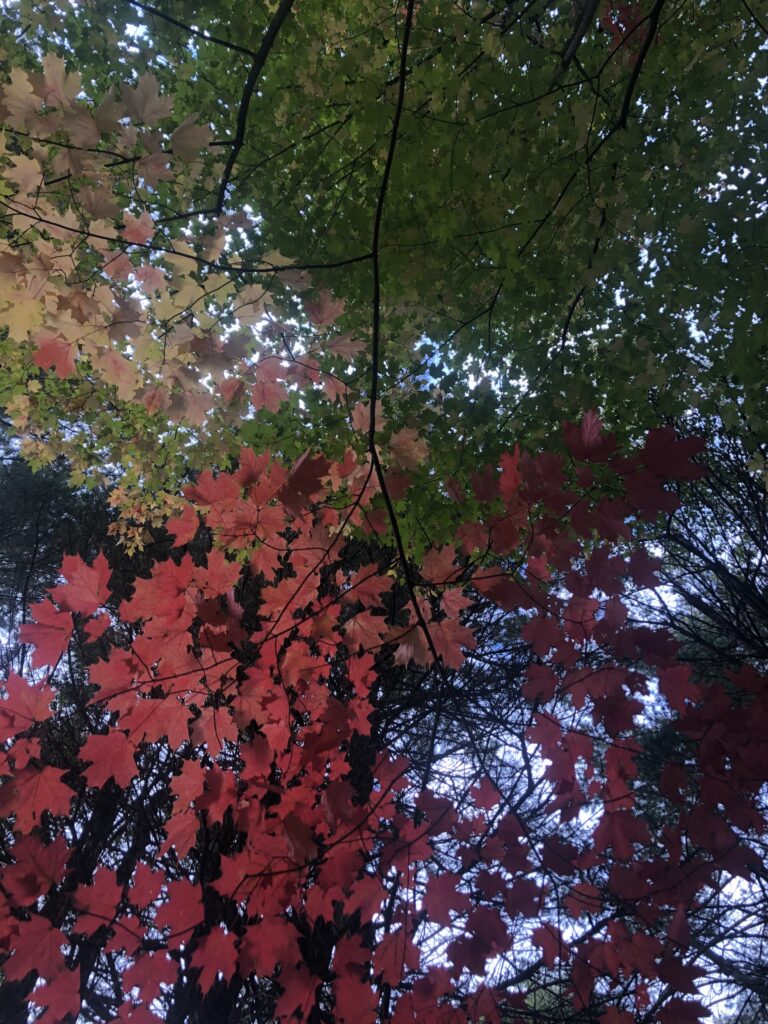
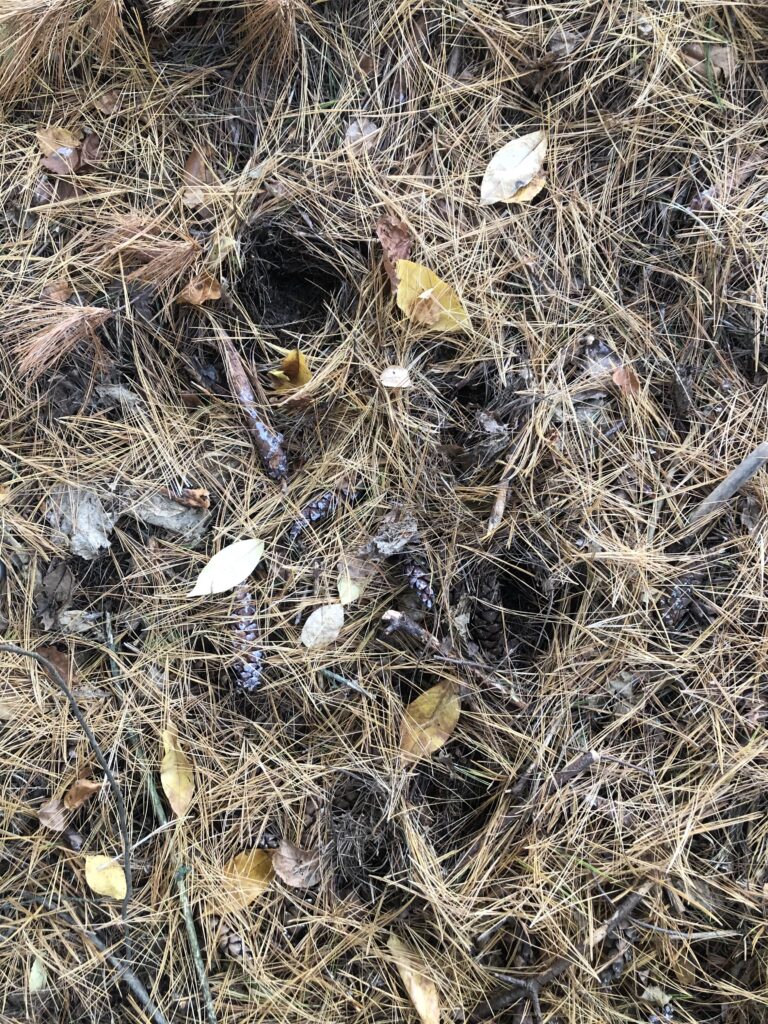
Wildlife
While at my site, I saw multiple chipmunks. Two of the chipmunks were chasing each other around a tree, while the other chipmunk I saw was collecting food, most likely in preparation for the winter. The chipmunk collecting food left distinct holes in in its path from digging in the leaves.
Understory
In the understory, There were a lot of sugar maple and boxelder saplings growing through the layer of pine needles on the ground. Poison ivy and ferns were also present. Some of the ferns were beginning to turn yellow and the poison ivy was turning a red color. On the forest floor, there were many logs and fallen trees, some of which had moss covering them. The prevalence of moss may have been due to the wet soil.
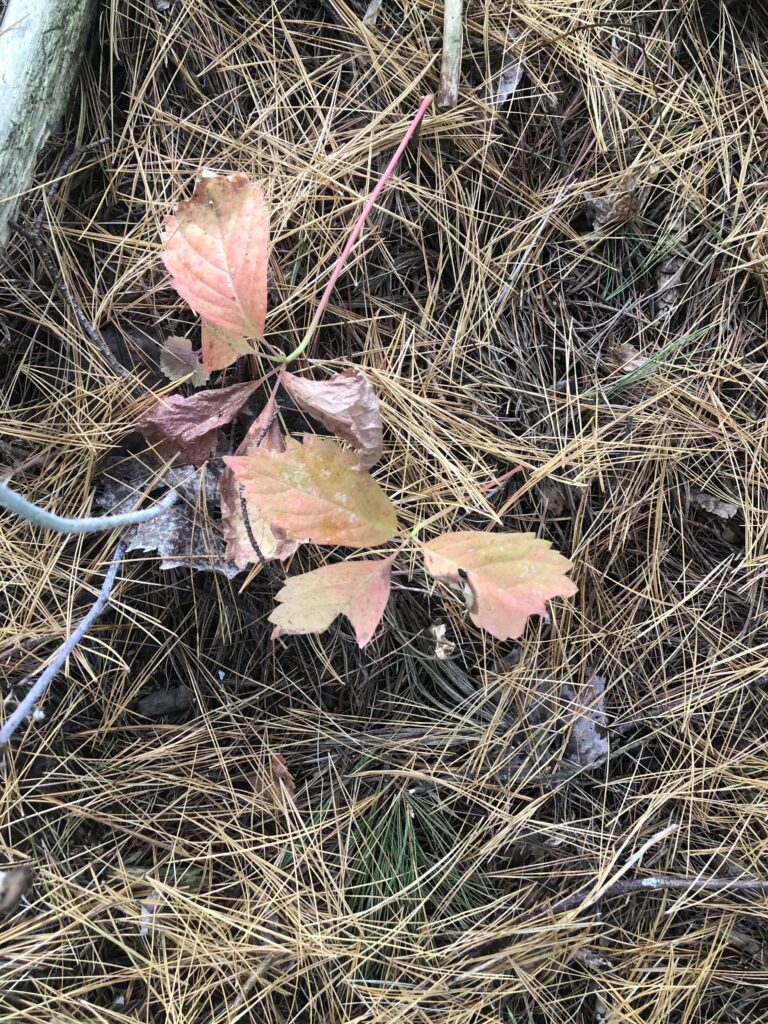
Bird’s Eye View Map
N. Hardy. 2020, October 25. Bird’s Eye View Map
What’s Happening in October?
~Visit 2~
N. Hardy. 2020, October 25. Tree Canopy
Overstory
In the overstory, there were noticeable differences in the color of the leaves and the number of leaves left on the trees. The leaves on the Boxelder trees were brown and covered in holes, while the leaves on the sugar maple had all turned yellow or fallen to the ground. There also seemed to be more pine needles that were browning or that had shed from the Eastern White Pines.
Understory
In the understory, there seemed to be much more pine needle coverage, and significantly more moss covering the logs and sticks on the ground. Much of the poison ivy I observed last time had changed to a red color or had turned brown, while the ferns stayed relatively green.
N. Hardy. 2020, October 25. Ferns
N. Hardy. 2020, October 25. Understory Plant
Wildlife
At my site I spotted one chipmunk climbing up a tree and a bird that landed on a branch, but I couldn’t quite identify it. I also heard a few crows calling while I was there, but I could not see them.
What’s Happening in November?
~Visit 3~
Event Map!
N. Hardy. 2020, November 8. Event Map
November Sketch Gallery

“The Ground”
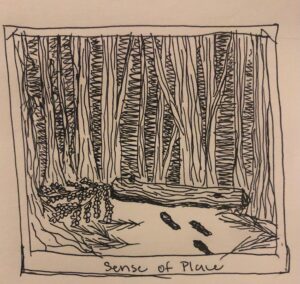
“Sense of Place”

“The Sky”
What’s Happening in November?
~Griffy lake Bloomington, Indiana: Visit 1~
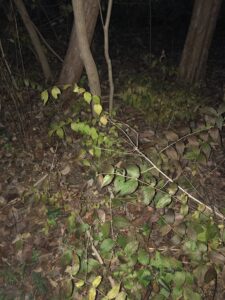
N. Hardy. 2020 November 29. Understory
Understory
At this new site, the understory had more vines than Centennial Woods. This may be because it was less of a pine forest so there were fewer pine needles on the ground. There was also less moss on the ground and the soil was not as moist as it was at Centennial Woods which may be due to the fact that the seasons don’t change as drastically in Indiana so there has still been fairly warm weather occasionally. Similar to Centennial Woods, there was poison ivy present, however there were no Hay scented or Sensitive ferns which were the ones most likely to be present in Centennial Woods.

N. Hardy. 2020 November 29. Overstory.
Overstory
Since most of the leaves had fallen from the trees, it made it harder to tell which species were present in this wooded area. However based on some of the leaves present on the ground and looking at the canopy, it seemed there were quite a few Eastern White Pines present along with White Oak trees, a few Scarlet Oak trees and possibly another kind of Oak I assumed to be Black Oak.There also seemed to be a few hickory trees which is a dominant species in Indiana. The two types of Hickory I suspect I saw were the pignut Hickory which has very pointy leaves and Shagbark Hickory which has shaggy bark.

N. Hardy. 2020 November 29. Deer sketch.
Wildlife
While at this site, I did see and hear more wildlife than while observing Centennial Woods. I heard many birds although I was only able to distinguish on kind of bird and that was the Canada goose. Geese are very prevalent on the lake nearby so their presence makes sense here. I also saw a couple of deer running past the edge of the woods where the forest meets a golf course. Bloomington already has a high population density of deer and deer like grazing near edges so I was not surprised to see them there. Unlike in Centennial woods, I didn’t see any chipmunks which may be due to the changing of the seasons since chipmunks do hibernate when it gets cold.
Outside Source: Source: K. Tungesvick (2019). The Plan Communities and Flora of Griffy Lake Nature Preserve. Bloomington, Indiana Parks and Recreation. https://issuu.com/bloomingtonparks/docs/griffynaturepreservemappingreport
Griffy Lake Bloomington, Indiana
Land Use History
Centennial Woods: The land use history of this area can be seen through the abandoned wire fencing, stone walls, and abandoned ROTC bunker present in the woods today. At one point this area had been almost completely cleared for farm land which means the current growth in Centennial Woods is fairly young. After it was farmland, the wooded area did begin to grow back, however the negative effects of the area being used as a dumping ground for waste were felt and meant the area wasn’t particularly healthy. Once UVM acquired the property, the area eventually became a popular recreational area and is still being used for educational purposes.
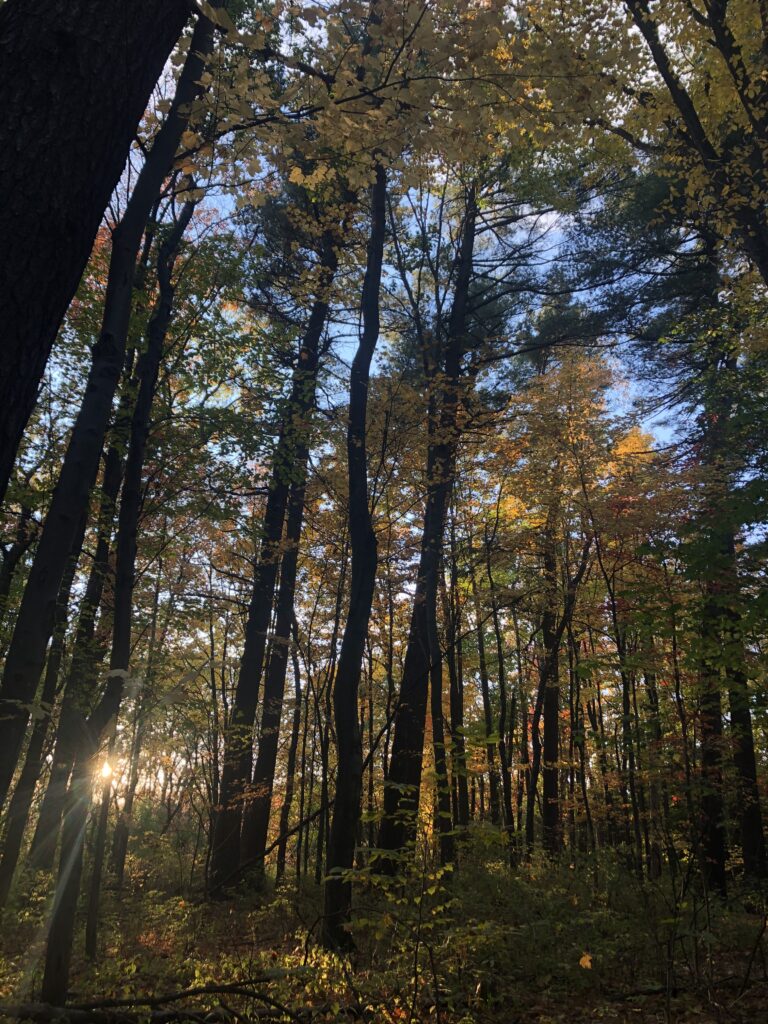
Griffy Lake Nature Preserve: The land use history of this area is surprisingly similar to that of Centennial Woods. At one point the land had been used as farmland and was cleared, but when the growing town of Bloomington began damming creeks in order to support the higher demand for water and combat the issue of leaking reservoirs due to the prevalence of Limestone soils, Griffy Lake was eventually made by damming Griffy creek and was used as a backup water supply. The natural area around the lake is under the control of the Indiana Department of Natural Resources while Indiana University technically owns a separate part of the property which is used as a teaching preserve.
K. Tungesvick (2019). The Plan Communities and Flora of Griffy Lake Nature Preserve. Bloomington, Indiana Parks and Recreation. https://issuu.com/bloomingtonparks/docs/griffynaturepreservemappingreport
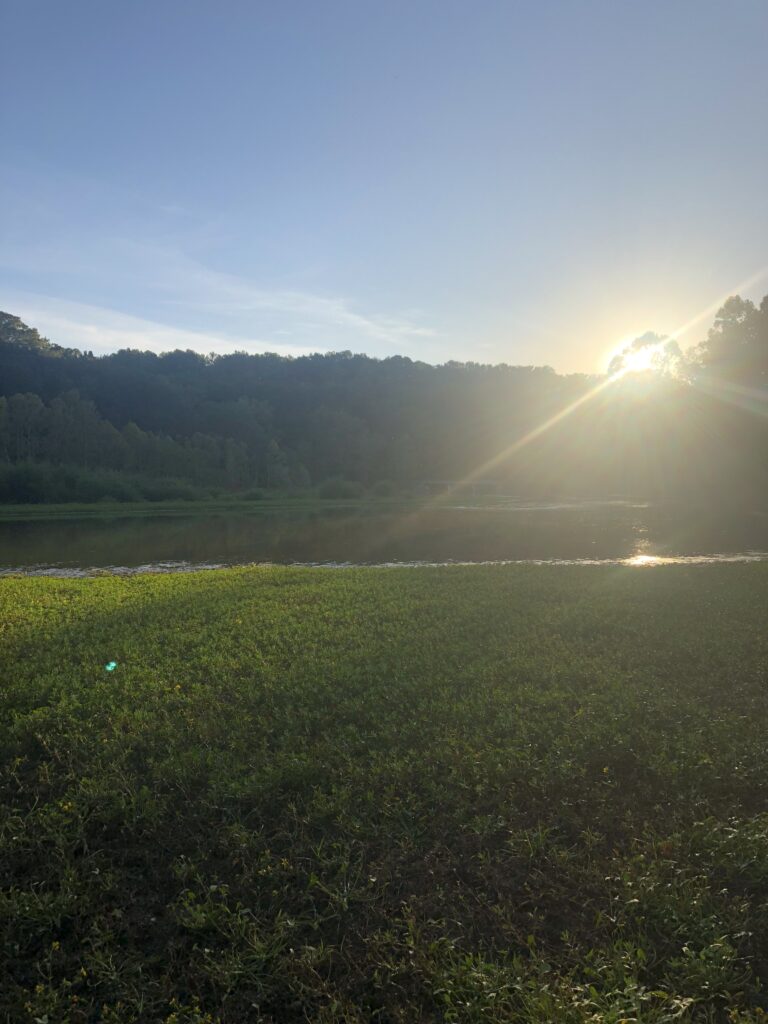
Hi, this is a comment.
To get started with moderating, editing, and deleting comments, please visit the Comments screen in the dashboard.
Commenter avatars come from Gravatar.